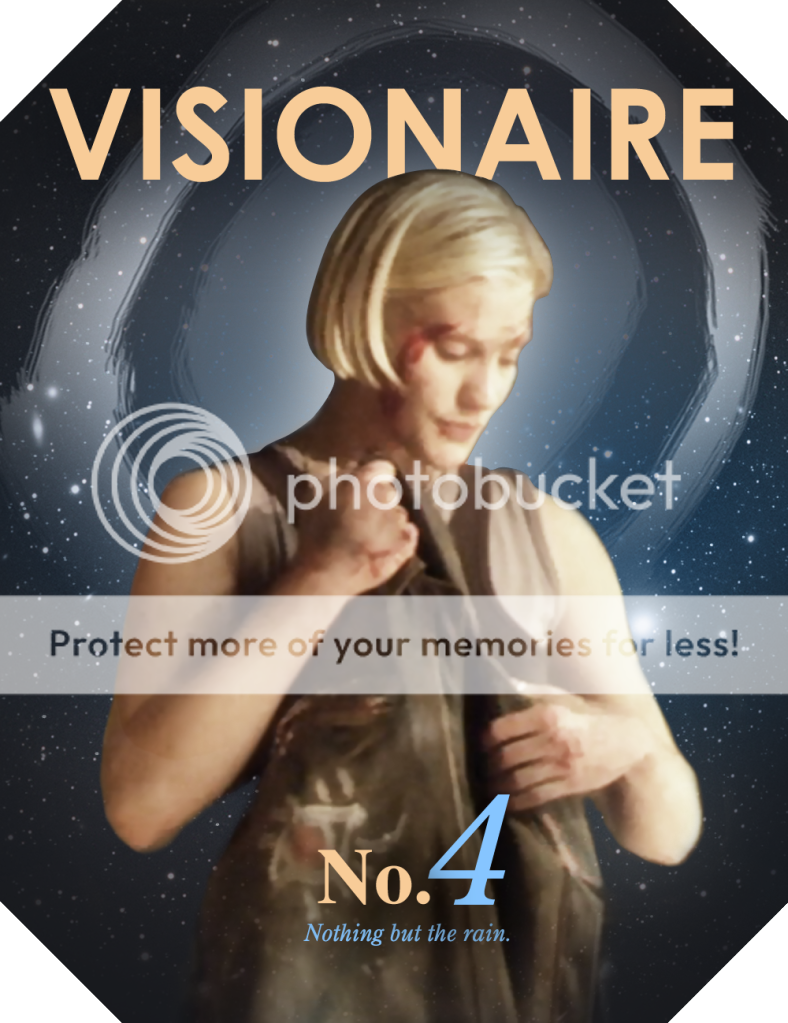DIY Media 2010: Fan Vids (Part Two)
/This is the third in an ongoing series of curated selections of DIY Video prepared in relation to the screening of DIY Video 2010 at the Hammer Museum in Los Angeles and organized by Mimi Ito, Steve Anderson, and the good folks at the Institute for Multimedia Literacy. The following selection was curated and written by Francesca Coppa, a long time fan and media professor researching the feminist tradition of fan vids. Women's Work, by Luminosity and Sisabet (Supernatural, 3:14)
A controversial and massively popular video that deliberately cut Supernatural's beloved male protagonists out of the picture to offer a critique of the eroticization of violence against women in media. As Luminosity noted in
an online profile by New York Magazine, "Women are sexually assaulted, murdered, and then laid out in artistic tableaux, chopped into pretty, bloody pieces. They usually further the plot, but they're hardly ever a part of the plot. We wanted to point out that in order for us to love a TV show--and we do--we have to set this horrible part of it aside." If it is women's work to be menaced and killed on tv, it is also clearly women's work to make a vid like this. (Note also that despite being cited in several academic articles and featured in New York Magazine, the vid is not available on YouTube; the audio has been disabled.)
Still Alive, by Counteragent (Supernatural, 3:07)
This vid is part of a conversation in fandom started by "Women's Work", above; or as one fan put it, "Women's Work/Still Alive = problem/solution, yes?" This vid speaks in the voice of both Supernatural's female characters and its fans; the vid's thesis, broadly simplified, is that, yes, female fans are angry at the show's sexism, but we'll keep making our female-oriented fanworks ("doing science") for those of us (women) who are "still alive." The vid ends by moving away from the show's violence to a celebration of female fanworks and fan communities.
Origin Stories, by Gianduja Kiss (Buffy/Angel, 3:47)
"Origin Stories" was released with the tag line, "It's Nikki Wood's fucking coat." This vid is about race and appropriation in the Buffyverse, hung on the fact that fan-favorite Spike's trademark leather coat turns out to be a trophy taken from the body of a black Slayer named Nikki Wood, whose son Robin shows up in season seven to avenge her. The vid not only critiques the text but also the fan response to it, both of which tended to privilege Spike's redemption arc over the stories of Buffy's minority characters. This vid circulated widely through fandom in 2008 as part of a larger conversation about race in both source and fannish texts.
In Exchange For Your Tomorrows, by lim (Harry Potter, 4:01)
A beautifully made character vid about Severis Snape that tells his story through the end of the books using footage from what were then only five films. Lim compensates not only through skillful editing but through making her own footage and special effects, which blend seamlessly with the movie's own magical effects. As Obsessive24 wrote, in her analysis of the vid, "Given that the vid uses existing and limited footage to tell a bigger story, the narrative is nonlinear and driven largely by emotional connectivity and symbolism. Lim uses object symbolism to astonishing effect: in terms of character representation (e.g. repetition of umbrella blowing in the wind) but also in general setting of atmosphere."
* Piece of me, by Obsessive24 (Britney Spears, 3:21)
RPF--or real person fandom--has been increasingly popular within traditional media/science fiction fandom in recent years. This vid uses one of Britney Spears' own songs to analyze not only the tabloid version of Spears' story (divorce, custody battles, substance abuse, bad behavior, etc.) but also Spears' counter-narrative of control. The vid also uses visuals from unconventional sources: including YouTube, tabloid photos, etc.
How Much Is That Geisha In The Window? by Lierduoma (Firefly, 2:55)
A critique of race, this time in Firefly, a show which imagines an Asian-influenced world without any Asian protagonists. Lierduoma brings the show's "Oriental" background to the foreground, focusing on the use of Chinese people and artifacts as set dressing and cutting multiple times to a sign that reads, meaningfully, "Good Dogs." This vid was influential at the DMCA hearings on noncommercial remix as an illustration of the ways in which vidders shift visual emphasis to people and objects on the margins. It became a crucial example of why vidders need to work with high-quality DVD footage - where these background items are visible - rather than lower quality digital video, where details of anything not central might be muddied or lost.
* Art Bitch, by Hollywoodgrrl (Battlestar Galactica, 2:19)
This character study of Starbuck reframes her bad girl behavior as Romantic, self-destructive artistic temperament. The vidder - herself an artist, of course - paints extravagantly over BSG's footage and collaborates with fanartist Deej to put Starbuck on the covers of the art magazine's I-D and Visionaire - which of course also both work as puns, considering Starbuck's identity quest and prophetic powers.


Destiny Calling: A Tribute To Vidding, by Counteragent (multi, 4:22)
A jubilant metavid made for "More Joy Day" (a fannish holiday dedicated to spreading joy) which demonstrates the vidding community's ability to articulate its own aesthetics, build its own canon, and celebrate its own talent. (Many of these vids and vidders will be easily recognizable to DIY 24/7 participants!)
Francesca Coppa is Director of Film Studies and Associate Professor of English at Muhlenberg College. She is also a founding member of the Organization For Transformative Works (OTW), a nonprofit organization established by fans to provide access to and preserve the history of fanworks and culture. Coppa and OTW recently worked with the Electronic Frontier Foundation to get a DMCA exemption for noncommercial remixers like vidders. Coppa also writes about vidding both as a feminist art form and as fair use.

